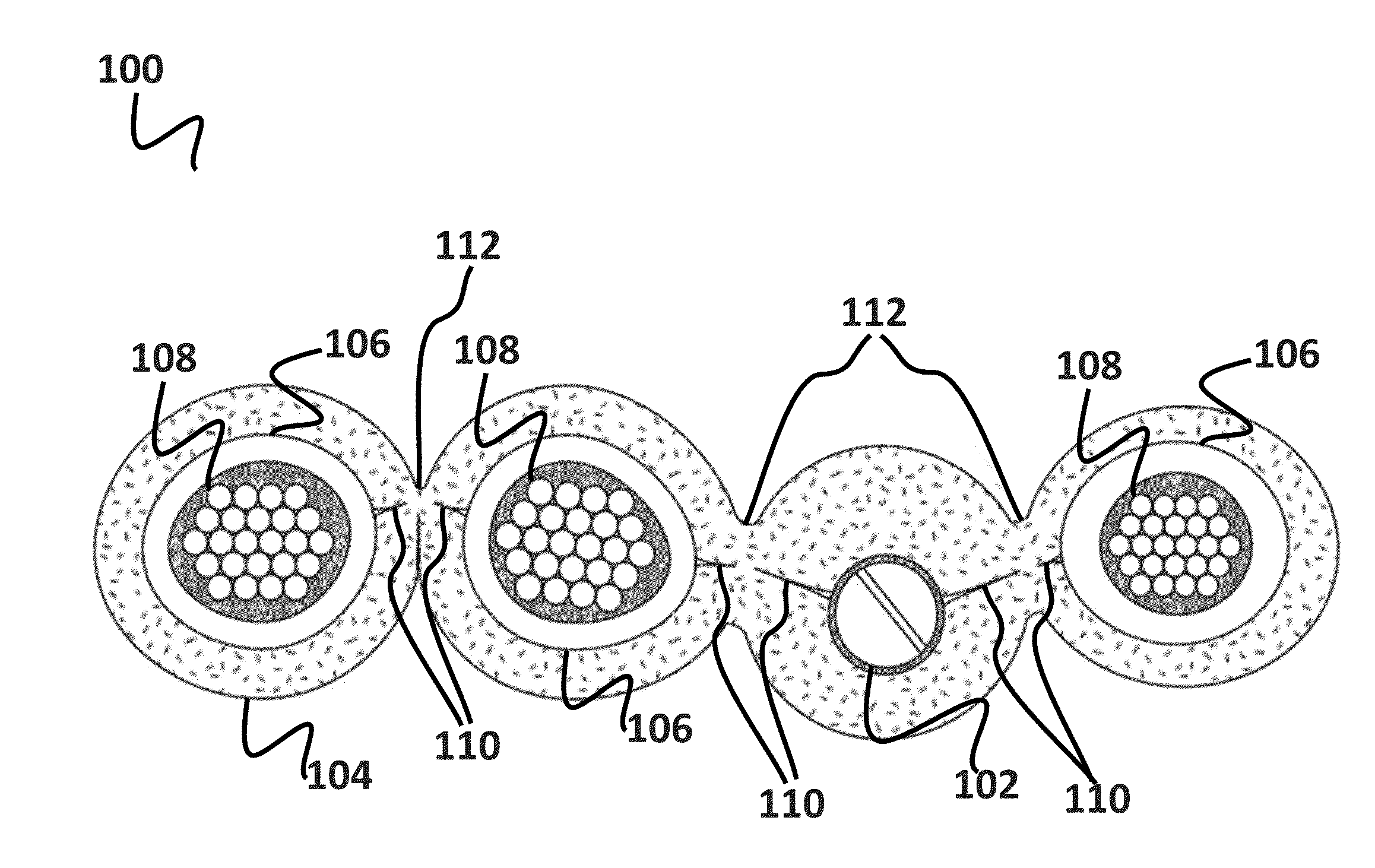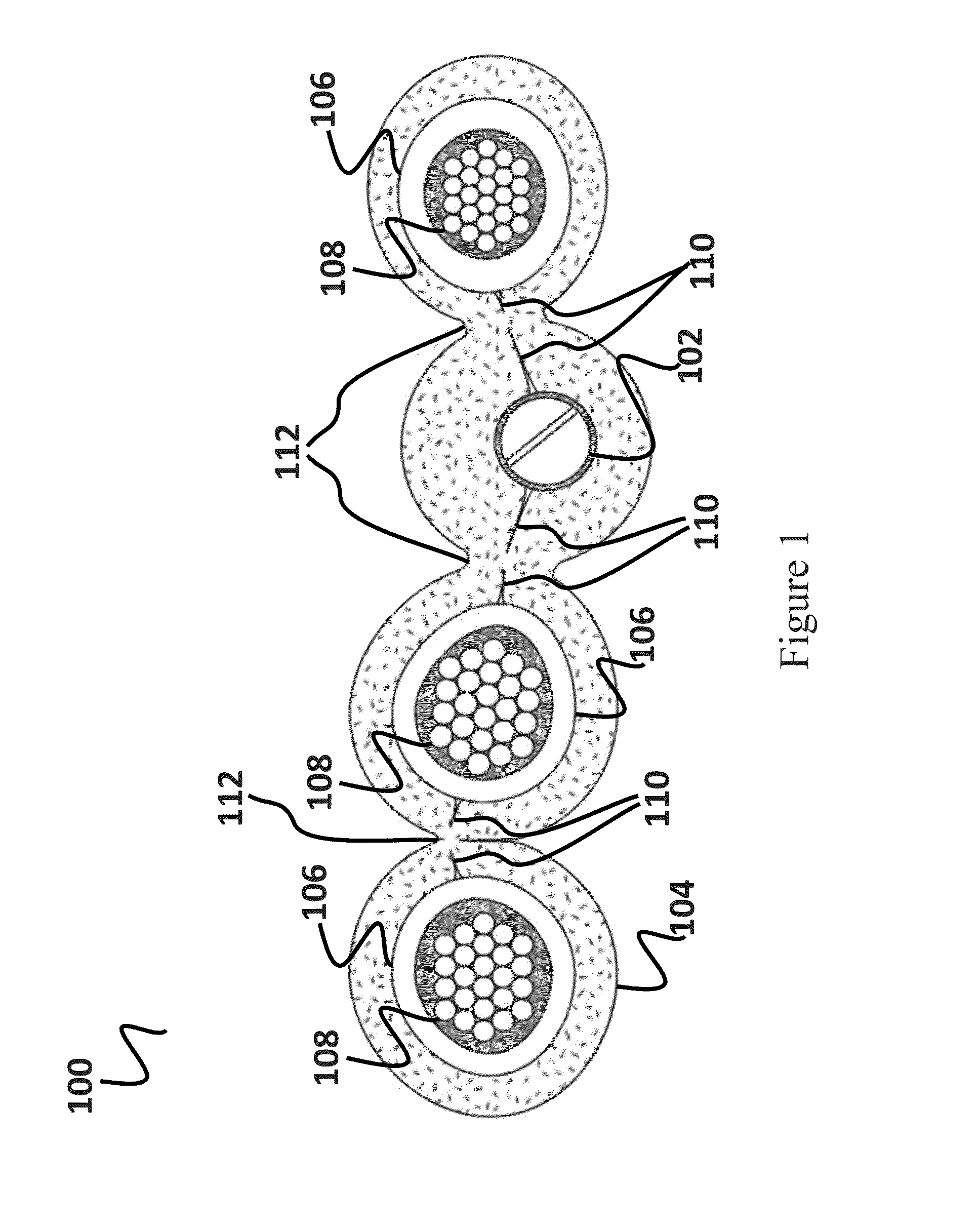Readily strippable cable
a stripping and cable technology, applied in the field of electrical cables, can solve the problems of time-consuming, time-consuming, and inconvenient repair, and achieve the effects of reducing the cost of repair
- Summary
- Abstract
- Description
- Claims
- Application Information
AI Technical Summary
Benefits of technology
Problems solved by technology
Method used
Image
Examples
Embodiment Construction
[0063]The invention is susceptible of many embodiments and variations. What is described here is illustrative, but not limiting, of the scope of the invention.
[0064]Referring to FIG. 1, a front-elevation sectional view of a four-wire cable 100 having an offset ground wire 102, or bonding conductor 102 (an insulated or uninsulated conductor forming part of the cable 100 assembly which is used for the purpose of connecting non-current carrying parts of electrical equipment to a system grounding conductor), cable sheathing 104 and wire jacketing 106 configured in accordance with one embodiment of the present invention is shown. More specifically, the cable 100 shown comprises: multiple wire cores 108, the portions of insulated wires, which may be stranded and / or solid conductors, lying under a protective covering 106, the wire jacketing 106; a cable sheath 104, the overall protective covering applied to the cable 100; a bonding conductor 102; and wire jacketing 106, which encapsulates ...
PUM
| Property | Measurement | Unit |
|---|---|---|
| electrically conductive | aaaaa | aaaaa |
| length | aaaaa | aaaaa |
| strength | aaaaa | aaaaa |
Abstract
Description
Claims
Application Information
 Login to View More
Login to View More - R&D
- Intellectual Property
- Life Sciences
- Materials
- Tech Scout
- Unparalleled Data Quality
- Higher Quality Content
- 60% Fewer Hallucinations
Browse by: Latest US Patents, China's latest patents, Technical Efficacy Thesaurus, Application Domain, Technology Topic, Popular Technical Reports.
© 2025 PatSnap. All rights reserved.Legal|Privacy policy|Modern Slavery Act Transparency Statement|Sitemap|About US| Contact US: help@patsnap.com



